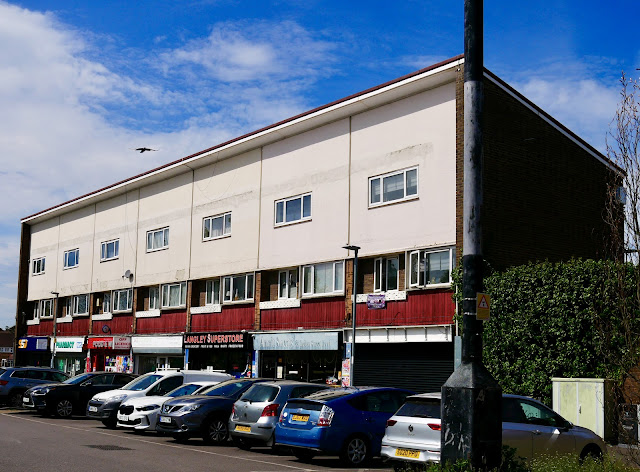London (and a life around and within)
London. I can't work out if it's been my star or my black hole. I've lived in its asteroid belt for my whole life, living in it for just a few years but in its gravity since I was born.
I grew up in Slough after my parents moved there from Kilburn. We'd get the bus to London from the local parade of shops in Trelawney Avenue. It blew my mind that we could travel from outside the local butcher to the centre of everything. I was never bored on those bus journeys, even though they took about an hour.
I have a recurring dream of walking through derelict buildings in London and have this feeling that I'm returning back to something. I wonder how much of 80s London I soaked in on those visits.
As a young teenager, I'd travel up to the South Bank and Soho for the thrill of flicking through plastic-wrapped vinyl that I had read about on webpages that had taken five minutes to load in the early days of the Netscape internet.
Soho was still a rabbit warren of porn shops, strips bars, prostitute flats and record shops. As a young man with an interest in relatively hard to find music, the record shops and gig venues were always nestled amongst the more interesting parts of London.
The South Bank back then was a quiet place to walk. The only noise was the sound of skateboard wheels. I wish I had photographs of how it all looked at that time, especially since much of the character of the South Bank was transformed by the London Eye and chain restaurants.
The concrete landscape of Lasdun's London felt much more like the central spirit of this country than the imperial postcard across the river.
Art school was and is probably where I feel most like I belong. Yes, I had stupid haircuts and wore ironic t-shirts, but I wasn’t even Slough anymore wearing jeans with holes in the knees meant you got chased home.
London later became a place I commuted into to work. I had begun a new career in Law and became part of corporate London. There was a charm to working in beautiful high-up offices in a suit and tie. There is a point that you can reach in London where you can get close to seeing how life is for wealthy Londoners, but it feels like how some new tower blocks have one entrance for the housing association residents and another for the private ones: your lift only goes so high.
I am now currently out of London's gravity. Although, as you can see from the photographs throughout this self-indulgent biography that no-one has asked for, I am in love with a particular period of the city that ignored the regency aesthetic of its past and looked towards the future to build for a new society.
The memory of London in the 80s and 90s to me is so strong, because it was a time where a lot of these projects such as the Barbican and the National Theatre had been completed, transforming non-descript parts of the city to buildings made from dreams. Most of these projects were idealistic and didn't become utopian places for people to live. Mainly because places like Poplar and Thamesmead left people to live in places that were disconnected from everything a community needs: places to work and amenities for example.
Now I live in an estate of brick houses and wooden fences where building is still continuing and where schools and shops will only be built once the community reaches a certain number. Until that point, hundreds if not thousands of us live in this island. We can make our houses look nice, but we have to drive to reach anything else that a community needs: schools, shops, leisure centres, scenic places to walk, places to work... whatever we build and however beautiful it is, everywhere still feels like an island.
Now that amenities can be replaced by Amazon vans delivering to our doors, Uber delivering to our doors, Google/Instragram/YouTube/Tiktok delivering information to our faces from a foot away, most of us working from home, we are ironically in a paradigm where the structures of the Smithsons and Goldfinger could actually be successful. It's far from the image of Utopia though.
I am sure that London will continue to be a big part of my life, whether that be a place I live in again, or a places perhaps my children go. It's sad to see the parts I love about it being demolished and the ubiquity of the new buildings that are going up. I hope there will always be little alleys that modern versions of my teenage self can adventure through to track down their own type of treasure.












Comments
Post a Comment